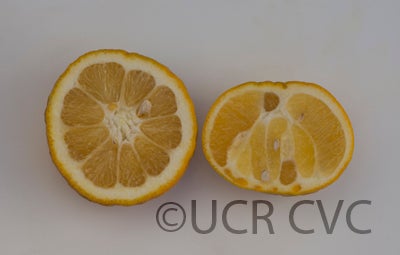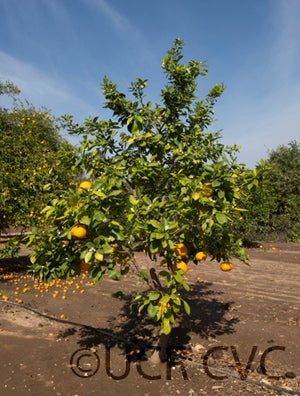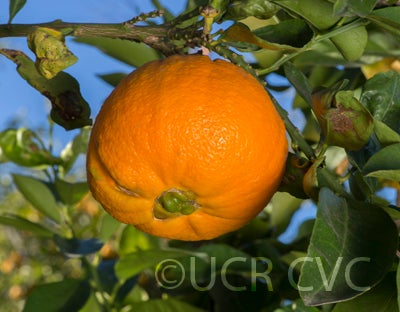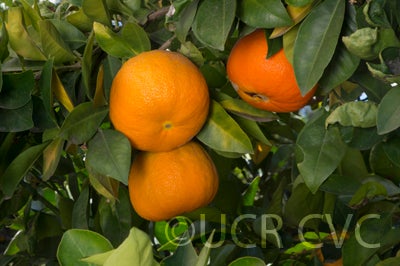Citrus aurantium L.
CRC 4157
PI 658352
VI 720
Source
Received as budwood from Spain, 2006.
Parentage/origins
Parents unknown.
Rootstocks of accession
Carrizo citrange, C-35 citrange
Season of ripeness at Riverside
October to December
Notes and observations
"Origin: Pamplona, year 1421 (information from SRA website). Selection of bouquetier type bigard (sour orange). The bouquetiers represent a distinctive group of bigards (sour oranges). They are generally small trees with few thorns and many flowers. They are grown primarily for their perfumy flowers, which are used in the production of high quality neroli oil and its byproduct of orange flower-water.
"Bouquetier de Nice' is vigorous and upright growing. The flowers are double with a very large pistil, which gives rise to a flat fruit of medium size that is also double, having a secondary fruit deeply embedded within the primary fruit. The leaves are large, broad, and slightly tapered. See The Citrus Industry, 1967, 1:491, and Chapot, 1964, Les Bigardiers Bouquetiers, 1 Partie, Al Awamia, 10:55-95.
Important note for fans of funky fruit: this selection was chosen for introduction to the US due to the cute horned fruits observed during the ISCN post-conference tour to Corsica in 1997. However, 'Bouquetier de Nice' is consistently described and shown in the literature as having flattened fruit (also refer to the alternate cultivar name of 'Bouquetier de Nice a Fruits Plats'). It is possible that this will end up not having horned fruits. It is also possible that the Corsica selection was mislabelled and did indeed represent a corniculated selection. In any event, there are other corniculated sour oranges presently under quarantine so at some point our desire for them should be satiated. (RRK, 12/2006)."
Availability
Commercially available in California through the Citrus Clonal Protection Program. Click here to order budwood.
USDA Germplasm Resources Information Network page for Bouquetier de Nice sour orange



